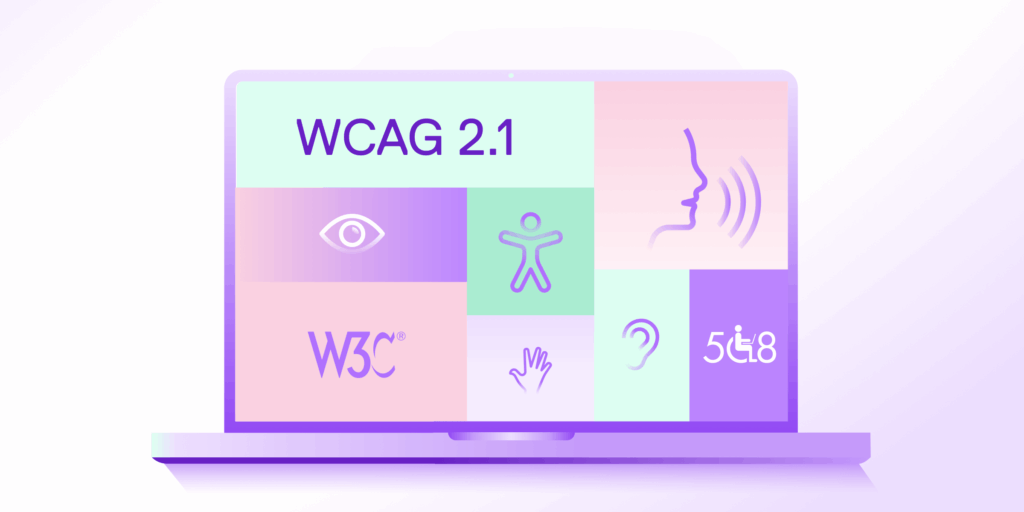Classroom management refers to the set of strategies and techniques that teachers use to create and maintain an environment conducive to learning. While often associated with K-12 education, classroom management is also an essential aspect of higher education, particularly in lecture-style courses where there may be large numbers of students and limited opportunities for interaction. In this post, we’ll take a closer look at what classroom management is in higher education, why it matters and easy strategies to implement in the classroom.
Table of contents
- What is classroom management?
- Why does classroom management matter?
- What is your classroom management style?
- How to create a classroom management plan
- Why creating a classroom management plan is important in higher ed
- 11 classroom management strategies to create a productive learning environment
What is classroom management?
Classroom management in higher education involves creating and maintaining an environment that is conducive to learning. This includes everything from setting expectations for student behavior and engagement to managing classroom logistics like seating arrangements and technology. Effective classroom management helps ensure that students are able to focus on the content being presented and participate in meaningful discussions and activities.
Why does classroom management matter?
Effective classroom management is essential for several reasons. First, it helps ensure that students are able to focus on the material being presented. When students are distracted or disengaged, they are less likely to learn and retain information. By creating a structured and supportive classroom environment, instructors can help students stay focused and engaged throughout the class.
Additionally, classroom management is important for creating a positive learning environment. When students feel comfortable and supported in the classroom, they are more likely to participate in class discussions and ask questions. This can lead to a more dynamic and interactive classroom experience, which can benefit both students and instructors. For example, Top Hat’s interactive and inclusive discussion tool sparks conversations where students are invited to share their ideas in a variety of ways, regardless of class size.
Finally, effective classroom management can help prevent or address behavioral issues. By setting clear expectations and addressing disruptive behavior in a timely and professional manner, instructors can help prevent minor issues from escalating into major disruptions. This can help create a more harmonious and productive classroom environment for all students.
What is your classroom management style?
One important aspect of effective classroom management is understanding and adopting a teaching style that supports student learning. As an instructor, it’s important to ask yourself, “What is my classroom management style?” Do you prefer a more authoritarian approach, where you enforce strict rules and consequences to control the classroom? Or do you prefer a more democratic approach, where you encourage student participation and collaboration to create an inclusive and engaging learning environment? Alternatively, do you prefer a more laissez-faire approach, where you give students more autonomy and responsibility for their learning?
Understanding your own teaching style and preferences can help you develop a classroom management plan that is effective and productive for both you and your students. By adopting a classroom management style that aligns with your teaching philosophy and supports student learning, you can create a positive and successful learning environment that promotes academic achievement and success. So take some time to reflect on your teaching style and consider how you can incorporate effective classroom management strategies to create a supportive and engaging learning environment in your higher education class.
What is a classroom management plan?
A classroom management plan is a set of strategies and guidelines that instructors use to create and maintain a positive and productive learning environment. It involves establishing clear expectations for behavior, participation, and assignments, as well as creating routines and procedures that support student learning. A classroom management plan may also include strategies for addressing disruptive behavior, encouraging student participation, and promoting student engagement and motivation.
So, whether you’re a seasoned instructor or new to the profession, taking the time to develop a classroom management plan can help you create a successful and fulfilling teaching experience in higher education.
How to create a classroom management plan
Creating a classroom management plan in higher education involves several key steps. First, it’s important to establish clear expectations for behavior, participation, and assignments, and communicate them to your students in a clear and concise manner. Second, you’ll need to create routines and procedures that support student learning, such as a system for turning in assignments, taking attendance, or transitioning between activities. Third, you’ll need to develop strategies for addressing disruptive behavior and promoting positive classroom culture, such as using positive reinforcement, giving clear and consistent consequences, and encouraging student participation.
Finally, it’s important to regularly reflect on and adapt your classroom management plan based on the needs and preferences of your students. This may involve seeking feedback from students, reflecting on your own teaching style and strategies, and making changes as needed to ensure a positive and engaging learning environment for all. By following these steps and continuously reflecting and adapting your classroom management plan, you can create a supportive and productive learning environment that promotes academic success for all students in higher education. Quizzes and polls are a great way to get real-time feedback from your students, and modify your classroom management accordingly. You can use them to highlight concepts in different, interactive ways and encourage student collaboration—but with Top Hat, they also create real-time insights that instantly let you know how your class is doing.
Why creating a classroom management plan is important in higher ed
A classroom management plan is crucial in higher education because it helps create a structured and supportive learning environment that fosters academic success. A well-designed classroom management plan sets clear expectations for behavior and participation, establishes routines that promote engagement and focus, uses positive reinforcement to motivate students, addresses disruptive behavior in a timely and professional manner, and engages students in the learning process. By implementing a classroom management plan, instructors can help create a positive and productive learning environment that benefits both students and instructors alike.
11 classroom management strategies to create a productive learning environment
Effective classroom management strategies can help promote student engagement, retention, and motivation, which can ultimately lead to higher academic achievement and success. Incorporate these strategies into your teaching to foster academic growth.
- Set clear expectations: One of the most important classroom management strategies is setting clear expectations for behavior, participation, and assignments from the very beginning of the course. Communicating your expectations can help students understand what is expected of them and can reduce confusion and misbehavior.
- Establish routines: Establishing routines can help create a predictable and supportive learning environment. For example, you might begin each class with a brief review of the previous lecture or end each class with a reflection activity. These routines can help students feel more comfortable and prepared for class and can also help them focus on the material being presented.
- Use positive reinforcement: Positive reinforcement can be a powerful motivator for students. Consider offering verbal praise, small rewards or extra credit for outstanding participation. This can help encourage positive behavior and can create a more positive learning environment.
- Use effective communication: Effective communication is essential for effective classroom management. Be sure to communicate clearly and respectfully with your students, listen to their concerns, and respond to their questions in a timely and professional manner.
- Encourage student participation: Encouraging student participation can help create a more engaging and interactive learning environment. Consider using group activities, discussions, and other classroom management techniques to encourage student participation.
- Use active learning strategies: Active learning strategies can help promote engagement and retention of material. Consider incorporating activities like problem-solving exercises, simulations, or case studies into your teaching.
- Provide timely feedback: Providing timely and constructive feedback is an important aspect of classroom management. Be sure to provide feedback on assignments and assessments in a timely manner, and offer constructive criticism that can help students improve their work. By getting regular feedback from your students, it’s easy to understand what’s working and which students need extra help. With Top Hat, every interaction—attendance, participation, assignments, tests—is automatically tracked for you.
- Address disruptive behavior: It’s important to address disruptive behavior in a timely and professional manner. This might involve speaking to the student privately after class, issuing a warning, or involving a higher authority if the behavior persists. By addressing disruptive behavior early on, you can help prevent minor issues from escalating into major disruptions.
- Use technology effectively: Technology can be a valuable tool for classroom management. Consider using tools like online discussions, polling software, or interactive whiteboards to engage students and promote learning. “Top Hat allows students constant access to notes and teacher notations,” says Michelle Newsom, an instructor at Wright State University. “It allows me to control the pace and adds student accountability in and out of the classroom.”
- Create a positive classroom culture: Creating a positive classroom culture can help promote engagement, motivation, and learning. Be sure to foster a supportive and inclusive environment that respects diverse perspectives and encourages collaboration and teamwork.
- Continuously reflect and adapt: Finally, it’s important to continuously reflect on your classroom management strategies and adapt them as necessary. Be open to feedback from students and colleagues, and be willing to try new techniques and approaches to improve your teaching.
By incorporating these classroom management strategies into your teaching, you can help create a positive and productive learning environment that benefits both students and instructors alike.



